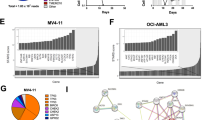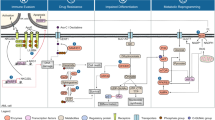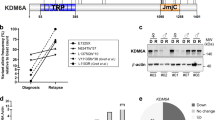Abstract
The best characterized resistance mechanism in adult acute myeloid leukemia (AML) is the one mediated by the MDR1 gene which has been shown to be associated with poor outcome. However, alternative proteins such as the more recently recognized multidrug-associated protein (MRP1), may also contribute to the resistance to anthracyclines and etoposide in AML. Recently, the role of this protein was discussed and was unclear in AML. However, recent data concerning the functionality and the modulation of the activity of MRP1 may elucidate its role in comparison with other mechanisms of resistance. In this paper, we will review these recent data concerning the role of MRP1 in adult AML.
This is a preview of subscription content, access via your institution
Access options
Subscribe to this journal
Receive 12 print issues and online access
$259.00 per year
only $21.58 per issue
Buy this article
- Purchase on Springer Link
- Instant access to full article PDF
Prices may be subject to local taxes which are calculated during checkout
Similar content being viewed by others
Author information
Authors and Affiliations
Rights and permissions
About this article
Cite this article
Legrand, O., Zittoun, R. & Marie, JP. Role of MRP1 in multidrug resistance in acute myeloid leukemia. Leukemia 13, 578–584 (1999). https://doi.org/10.1038/sj.leu.2401361
Received:
Accepted:
Published:
Issue Date:
DOI: https://doi.org/10.1038/sj.leu.2401361
Keywords
This article is cited by
-
Efficacy and resistance of gemtuzumab ozogamicin for acute myeloid leukemia
International Journal of Hematology (2013)
-
CD33-directed therapy with gemtuzumab ozogamicin in acute myeloid leukemia: progress in understanding cytotoxicity and potential mechanisms of drug resistance
Leukemia (2005)
-
Functional characterization of minimal residual disease for P-glycoprotein and multidrug resistance protein activity in acute myeloid leukemia
Leukemia (2001)
-
Sensitisation of HL60 human leukaemic cells to cytotoxic drug-induced apoptosis by inhibition of PI3-kinase survival signals
Leukemia (2000)



